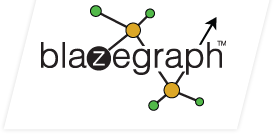-
Notifications
You must be signed in to change notification settings - Fork 170
Hardware_Configuration
Blazegraph uses a native graph database with an underlying B-tree-based implementation. It is not required to store the full graph database in memory. The general guidance is to get a machine with the fastest disk that is cost-effective for your application. In many high-end settings, customers have used devices such as FusionIO to achieve a very high performance for loading and query. If there is a tradeoff between additional RAM and faster disks, we recommend faster disks.
If you expect a workload with a large number of concurrent queries, it is recommended to get a fast multi-core CPU with sufficient RAM.
It is also highly recommended that you review the optimizations sections below to properly tune your instance.
As a rule-of-thumb, we use 90 Bytes per Triple as an estimate. Actual size will vary based on data and the options used when configuring the namespace, i.e. quads, RDF, text indexing, etc.
| Triples | Est. Size on Disk (GBs) |
|---|---|
| 10M | .84 GB |
| 100M | 8.4 GB |
| 1B | 83.8 GB |
Because of the underlying B-tree implementation, the amount of RAM required is predicated to grow and n * log(n) where n is the data scale in GBs. We estimate a floor value for RAM at 4GB for a 10M edge graph. The chart below is a sizing guide, but actual performance will depend on your query workload and data needs.
| Edges (triples) | RAM (GB) |
|---|---|
| 10M | 4GB |
| 100M | 4GB |
| 200M | 8GB |
| 500M | 16GB |
| 750M | 24GB |
| 1B | 32GB |
We have a number of deployments within Amazon EC2 instances. For the best performance, we recommend SSD storage for the journal files. We typically see people in C3, R2, or I2 instance types. The M3 instances can be a good choice for development and testing or production with smaller data scales. IO behaviors on EC2 can be tricky.
The table below shows the machine configuration used for our benchmarking activities performed during release QA.
| Configuration | Value |
|---|---|
| Server Info | (hosted CI benchmark server) |
| Processor | Intel® Xeon® E3-1270 V3 |
| Processor speed | 4 Cores (HT) x 3,5 GHz |
| RAM | 16 GB DDR3 ECC |
| Hard Disk | 240 GB (2 x 240 GB SSD) Intel® S3500 |
| RAID | Software RAID 1 |
| Operating System | Ubuntu 14.04.1 LTS |
| Runtime configuration | 4g RAM given to server for execution |
| Store Type | DiskRW |
| JVM args | -ea -Xmx4g -server -XX:+UseParallelOldGC |

